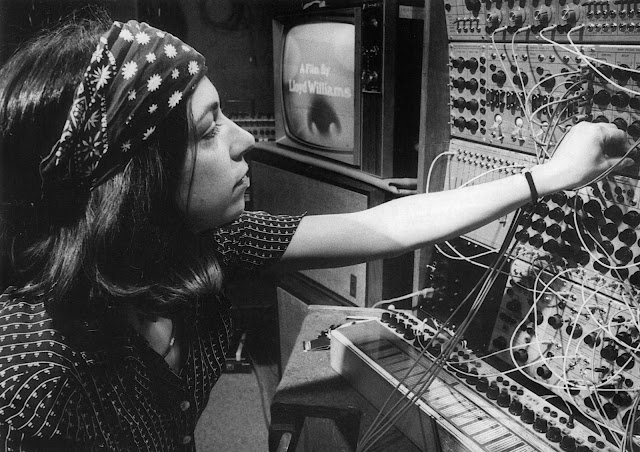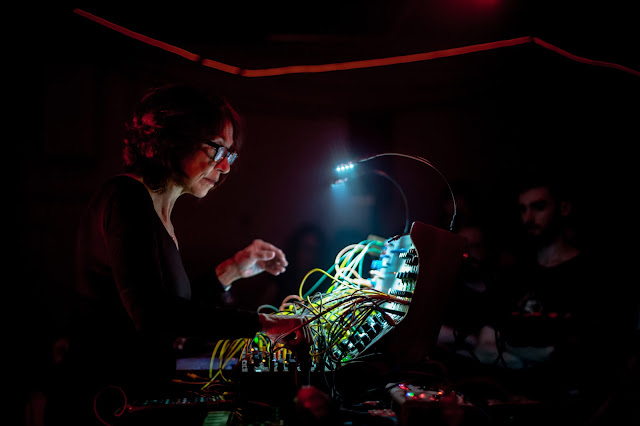

via the National Music Centre
"Synth legend Suzanne Ciani to mentor emerging electronic producers as next Master in Residence at Studio Bell
Four artists from across Canada to be mentored by electronic music pioneer
(Calgary, AB — October 17, 2019) The National Music Centre (NMC) is pleased to announce electronic music pioneer Suzanne Ciani as the next Master in Residence at Studio Bell in Calgary.
Dubbed the 'Diva of the Diode,' Suzanne Ciani is a five-time Grammy award-nominated composer, electronic music pioneer, and neo-classical recording artist whose work has been featured in countless commercials, video games, and feature films. Over the course of her 40-plus year career, Ciani has released 16 solo albums, including Seven Waves, The Velocity of Love, and most recently, her comeback quadraphonic Buchla modular synth performance recording LIVE Quadraphonic.
Alongside NMC ON and AEMCON events, Ciani will offer her expertise on electronic music composition, including analog modular live performance and sound design techniques, with four emerging Canadian electronic artists during an intensive one-day session. Participants include Calgary producer and bass music advocate Homesick, Winnipeg-by-way-of-Toronto electronic artist Joanne Pollock, experimental music-maker YlangYlang from Montreal, and Toronto-based experimental electronic performer Korea Town Acid, who will also appear as part of NMC ON: After Hours on November 15. Tickets for After Hours are on sale now at studiobell.ca/whats-on.
The public will also have a chance to see Ciani lead a public Buchla Masterclass on November 16. Tickets for that event are available at studiobell.ca/whats-on.
'I’m thrilled to share my history and expertise in my favorite music medium, analog modular, with young emerging Canadian artists,' said Suzanne Ciani. 'I’m looking forward to our exchange of ideas.'
The Master in Residence program invites emerging artists to work under the leadership of a Master in Residence chosen to inspire creativity, encourage innovation, share expertise and provide mentorship. Previous masters have included acclaimed country icon Terri Clark, singer-songwriter Steven Page, Canadian techno ambassador, Richie Hawtin, and Our Lady Peace founder, Raine Maida. Internationally-acclaimed artist and producer, Daniel Lanois led NMC’s first ever Master in Residence event in 2015 with an interactive master session in collaboration with Sled Island Music and Arts Festival.
'As a pioneering, Grammy-nominated composer and performer of electronic music, Suzanne Ciani is a master with international pedigree,' said Adam Fox, NMC’s Director of Programs. 'Connecting emerging Canadian artists with career-altering mentorship opportunities is something that the National Music Centre takes great pride in. This is going to be a once-in-a-lifetime experience for this year’s selected participants.'

























































